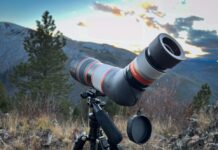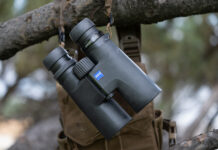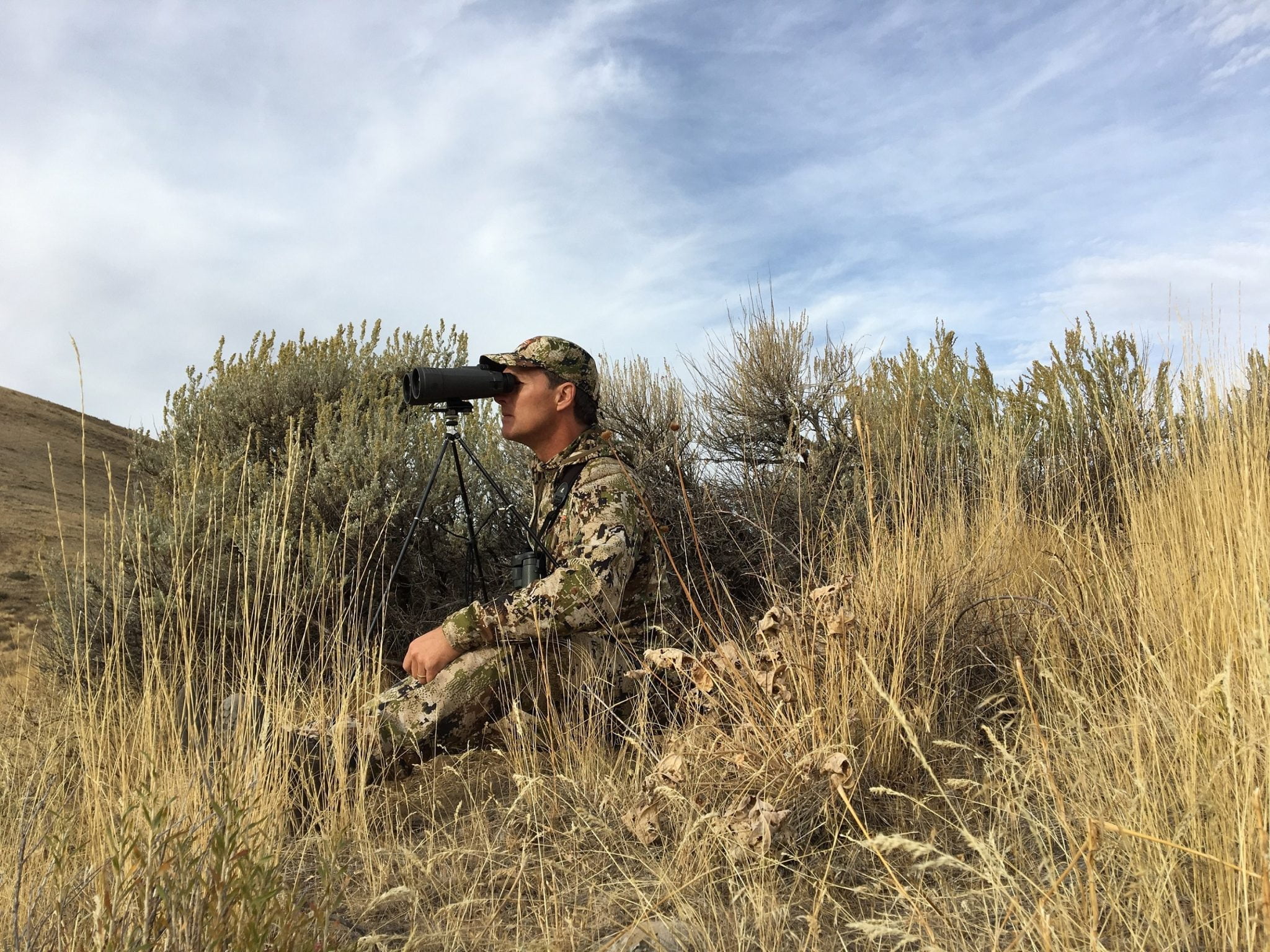 In the words of Travis Tritt, “It’s a great day to be alive…” that is if you’re a fan of big binoculars. By “big” I mean the 15 power (plus) platform. As I’ve written for years, this high-magnification optic is a super tool for mule deer hunters in open to semi-open country. In the right hands and in the right places, you’ll find more bucks with the big binos than any other optic (see why here). I’ve seen more big binos hit the market in the last few years than ever before, including the new SIG SAUER ELECTRO-OPTICS’ ZULU9 15×56 in 2018
In the words of Travis Tritt, “It’s a great day to be alive…” that is if you’re a fan of big binoculars. By “big” I mean the 15 power (plus) platform. As I’ve written for years, this high-magnification optic is a super tool for mule deer hunters in open to semi-open country. In the right hands and in the right places, you’ll find more bucks with the big binos than any other optic (see why here). I’ve seen more big binos hit the market in the last few years than ever before, including the new SIG SAUER ELECTRO-OPTICS’ ZULU9 15×56 in 2018
SIG SAUER is a Rokslide sponsor. In 2017, I thoroughly vetted their ZULU5 8X42 here. I was happy with the value in that binocular and figured I’d better give these new ZULU9s a run. Mine arrived in July, right in time for scouting for big mule deer. I had them in the hills within a few days and used them right up to press time. I’ll share my thoughts in this review.
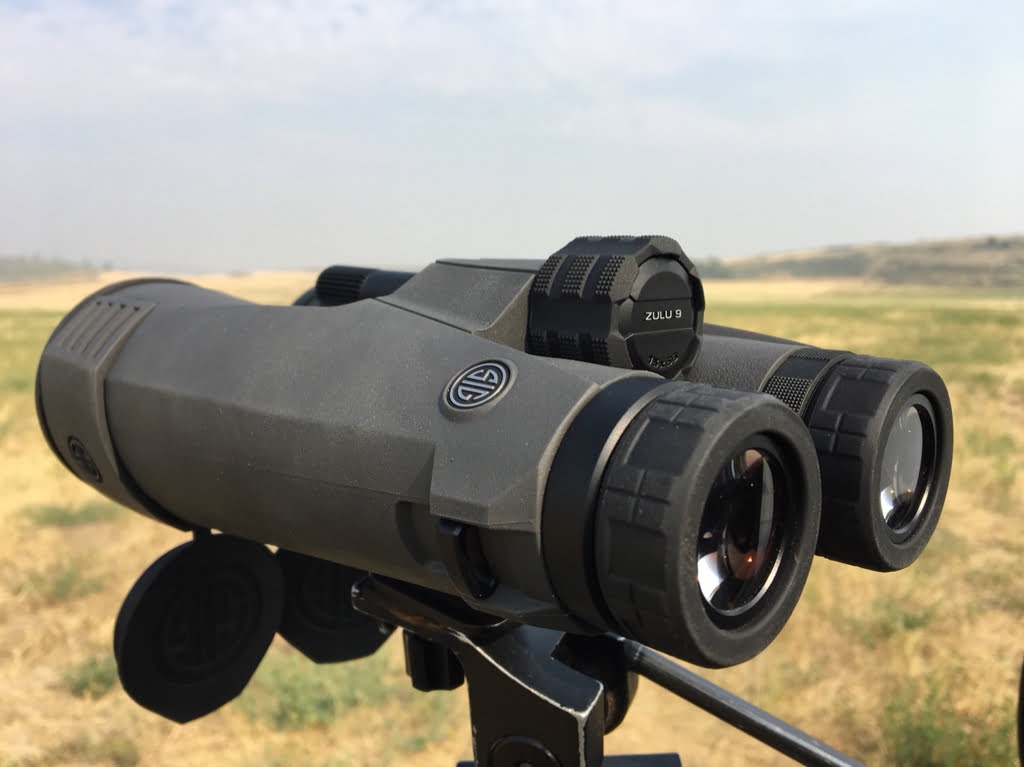
First, every review is better if we can compare the product to a known product. I’ve used almost a dozen different big binoculars over the decades. It is my opinion, all performance criteria considered, that the Swarovski SLC 15×56 is the top optic in this platform. For much of this review, that is what I compare the SIG ZULU9 to. However, if you watch the included video, I also compared the Zeiss Conquest and Vortex Kaibabs to these SIGs.
The Specs
Let’s get this out of the way first. The vast majority of these big binos will be 15×56 (although there are exceptions). The SIG ZULU9 is no different. Other specs are in the table below, but the listed specs that matter most to me in the platform are eye relief, field of view (FOV), interpupillary distance, and weight. I also consider edge-to-edge clarity (ETE), resolving power (also called optical resolution), and light transmission.
| Product Specifications | 15x56MM |
| Magnification | 15x |
| Eye Relief | 17.8 mm |
| Exit Pupil | 3.8 mm |
| Linear(FOV)@1000 yds | 236 ft |
| Linear(FOV)@1000 m | 78.7 m |
| Clear Aperture | 56 mm |
| Angular (FOV) | 4.5° |
| Close Focus Distance | 9 ft |
| Interpupillary Distance | 56 mm-74 mm |
| Diopter Range | +/- 3 |
| Weight | 43 oz / 1220 g |
| MSRP | $1,599.99 |
Eye Relief
This is super important for the high-magnification binos. To get the most out of the platform, the optics must be tripod mounted and just as important, cannot touch the user while viewing with no vignetting
At 17.8mm, the eye relief is listed as a full 1.8mm greater than the Swarovski SLC’s 16mm. It’s been my experience that this spec isn’t totally objective and can vary from user to user. Sure enough, once on the tripods, I couldn’t discern any difference between the SIGs and the Swarovskis. The ZULU9 15×56 allowed me to see a full FOV without my nose touching the ocular lenses when not wearing eyeglasses, as did the Swarovskis.


It also held true when wearing my eyeglasses for both optics although it’s more difficult. Both these optics–and frankly all big binos that I’ve tested–barely if at all accommodate eyeglass wearers.
FOV
This variable is important to me as the entire idea of using the high-magnification platform is the ability to study a stationary image in a grid pattern. The more of the mountainside you can clearly see from one edge of the image to the other, the more you can glass without moving the optic. The FOV of the SIGs is insignificantly different than the SLCs: 236ft @1000yds vs. 234ft @1000yds. In actual testing, I found the SIGs had a slight, slight advantage in this category. However, the Swarovski’s have better edge-to-edge (ETE) clarity and that muddies the difference (more on that below and in the included video).
Interpupillary Distance
This is the center-to-center distance between the ocular lenses. It matters because it’s one of the variables that determines the fit of the binocular (and fit determines function). It’s expressed as a range from minimum to maximum. With 56-74mm, it’s comparable to the Swarovski SLC’s 56-76mm. I must be average in my personal distance, as I’ve been able to get almost every optic to fit me in this platform, but some users can’t. In actual testing, I found the SIGs fit me well. If fit has been an issue for you, I can only recommend you compare the factory specs to what has worked for you, or try the SIGs before purchasing.
Weight
Weight is important to just about any hunter who has to hike to find game. At 43 ozs, the ZULU9 is only 0.7 oz heavier than the SLCs–insignificant. Between these two optics, it’s the actual size dimensions that a hunter will notice, although they are close. The SIG ZULU9s are one inch taller than the Swarovski SLCs. Depth and width are close enough that I didn’t notice it.

More Performance Criteria:
Optical Resolution
Optical Resolution term describes “the ability of an imaging system to resolve detail in the object that is being imaged” (click here for more info). Most hunters want to know how “clear” an optic is. By testing resolution, I can give some objective feedback on clarity.
Fellow Rokslide writer, Matt Cashell, has been using the 1951 USAF Resolving Power Chart available from Edmund in his reviews for years. I could see the value in including this information in my reviews, so I worked with Matt to get a basic understanding on how to use the chart. While I’ve got a lot to learn, it didn’t take long to see that this is a good way to compare optics.
I did a head-to-head of these ZULU9s against the Vortex Kaibab 18×56, Zeiss Conquest 15×56, and the Swarovski SLC 15×56. You can watch that test in the video below. In short, the ZULU9s beat the Kaibabs and the Conquests and tied the SLCs. While there is more to a great optic than just resolving power, these SIGs certainly perform well in that category.
ETE
To my knowledge, ETE clarity is not a spec released by the manufacturer, however, it’s tossed around by hunters a lot and it’s pretty important to me, so I’ll address it.
The better the ETE, the more usable the FOV. I have a spotter that when set on lower power has terrible ETE. That effectively reduces the FOV by a significant percentage. I’ve seen the same problem in some binoculars. I found the ETE was good in the SIG. In fact I thought it was as good as the SLC until I did an actual side-by-side comparison. In that test, I had to give ETE performance to the SLC by a significant margin.
Combine that loss of FOV in the SIG with the apparent better FOV mentioned above, I’d say it’s a practical tie between the two optics in your ability to glass. I would rank this difference low in my purchase decision if it came down to the SIG vs. the Swarovski.
Light Transmission
This term specifies how much light remains after it goes through the optic and is expressed as a percentage. SIG lists this spec as 95% while Swarovski has it at 93%. I tested this in a head-to-head at last light and found no detectable difference between the two optics. You can watch the video above for a more in-depth discussion on the subject.
Color and Contrast
Contrast is the optical effect of differentiation among colors while color transmission is an optic’s ability to favor one color over another. However, I don’t cover these in my optics’ reviews. Why? I’m color blind or more accurately, I have color vision deficiency. While I can certainly see colors, I see them differently than most other people and therefore hesitate to share what I see as it’s likely very subjective to my eyes. Keeping that mind, I did notice the colors I could see in the SIG ZULU9 were not as rich as the Swarovskis. This was only noticeable in side-by-side testing. (For an excellent discussion on this topic and more, see Matt Cashell’s article here.)
One feature to note is the ocular eye cups are of the graduated screw-in type. Just like every big binocular I’ve used, I screw them all the way down so I don’t bump the optic. If the ambient light is so bright that I need to block it, I put a jacket over my head.
Accessories
Tripod Adapter
The SIG ZULU9 comes with a tripod adapter (if yours did not, contact SIG). It’s a little bulky but functions well. There are three 1/4-20 holes to allow you to move the optic forward or backward on the tripod for fit. There is not enough distance between the holes to affect the balance point much. I’ve also heard good things about Outdoorsman’s Stud and Bino Adapter I checked with them and confirmed that they will fit these SIGs.

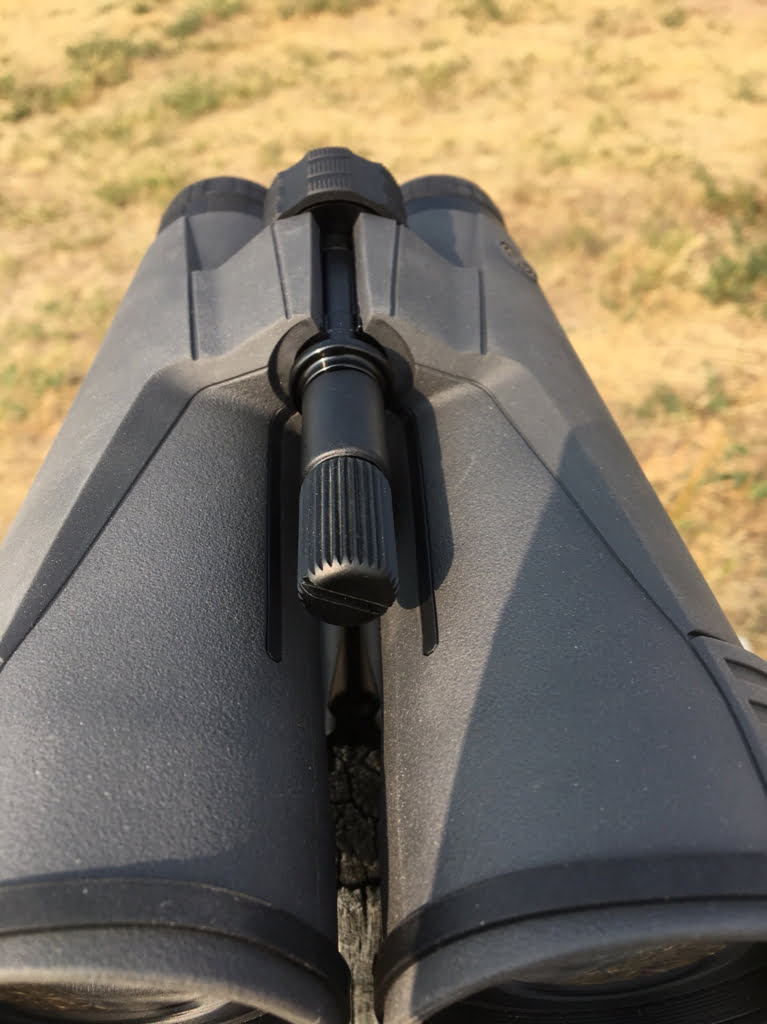
Lens Cap
I’d have to give the the objective lens caps a D minus. No matter how much I tried to learn the trick, I couldn’t get them to stay on reliably. The ocular lens caps worked well enough, but seem pretty cheap to me.
Carrying Case
15x are not made to hand hold or even really wear around your neck, so a carrying case is an important accessory as most of the time you’ll carry the optic in your pack between glassing points. The SIG’s padded nylon case is flexible and simple, has a shoulder strap, is easy to access, and seems durable.
Neck Strap
For the same reasons stated above about the carrying case, I did not install the neck strap. Inspecting it, it seems like it would be comfortable and durable.
The SIGs also have a rubber armor coating called the STEALTH ID™ that protects the optic very well, and is easy to grip.
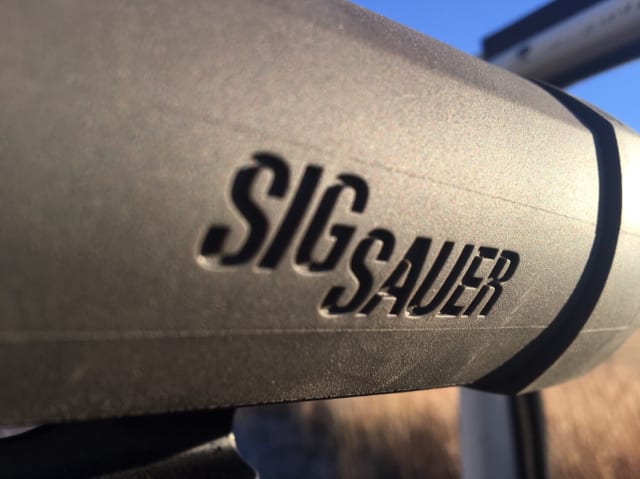
The ZULU9s are listed as waterproof and fog-proof. I certainly didn’t take them underwater, but used them in fog and damp conditions with no internal fogging. To me, that’s given performance with any decent optic.
 The ZULU9 is covered by the generous SIG SAUER® INFINITE GUARANTEE® While we never want to have to use a warranty, it’s there if you need it.
The ZULU9 is covered by the generous SIG SAUER® INFINITE GUARANTEE® While we never want to have to use a warranty, it’s there if you need it.
As of press time, any SIG dealer can order the ZULU9 15×56. On the web, I could only find the SIG at Optics Planet. Rumor has it that Sportsman’s Warehouse will be carrying it, too.
If you’ve ever wanted to enter the big binocular platform, SIG SAUER just made it that much easier with their SIG SAUER ELECTRO-OPTICS’ ZULU9 15×56. This optic offers what I consider the most performance per dollar in the big binocular platform (although I’ve not tested them all), bumping up against even the top tier optics. All this while saving hundreds of dollars. I can highly recommend it for any western hunter who needs to spend less without sacrificing noticeable performance.
You can ask questions or discuss this review here.















